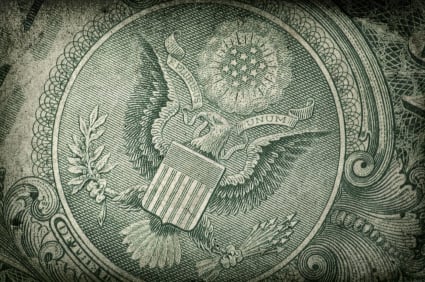'I've never been more optimistic on the long-term prospects of the U.S. dollar and U.S. economy,' says fund manager
Fidelity Investments, the Boston-based fund company that oversees $1.64 trillion, is bullish on the U.S. currency just as Pacific Investment Management Co. and Goldman Sachs Group Inc. are warning investors against buying.
“The value of the dollar is close to a bottom,” John Carlson, manager of the Fidelity New Markets Income Fund, wrote in a report yesterday on the company's website. “I've never been more optimistic on the long-term prospects of the U.S. dollar and U.S. economy.”
America's currency will strengthen over the next 18 months to three years because of competitive advantages in the U.S. including the rule of law, a strong education system and labor mobility, Carlson wrote. The greenback is cheap now, according to the report.
The dollar has dropped 13 percent in the past year against a trade-weighted basket of six currencies, even after rallying more than 3 percent from a 33-month low set May 4. Pimco and Goldman Sachs argue that overseas markets will lure money managers in the coming years with faster economic growth, higher interest rates and stronger government finances.
The U.S. currency slid 0.7 percent against the euro to $1.4184 as of 1:03 p.m. in London.
Alternatives to Treasuries
Bill Gross, who runs the $240.7 billion Total Return Fund for Pimco in Newport Beach, California, said investors should “revolt” against the Federal Reserve's low interest rates. Fund managers should seek alternatives to U.S. bonds, “including developing/emerging-market debt at higher yields denominated in non-dollar currencies,” he wrote in a commentary this month on the company's website.
Gross' Total Return Fund, the biggest bond fund in the world, returned 7.83 percent in the past year, beating almost four-fifths of its competitors, according to data compiled by Bloomberg.
Carlson's New Markets Income Fund gained 14.1 percent, which topped almost two-fifths of its peers, the data show.
Goldman Sachs, the U.S. bank that lost money from trading on only one day in the first quarter, cut its dollar forecasts on May 18, saying growth in the world's largest economy is lagging behind other nations.
Dollar Forecast
The dollar will decline to $1.55 per euro in a year, analysts led by Thomas Stolper in London wrote in a note to clients. It will trade at 86 yen in 12 months, from an earlier forecast of 90 yen, according to the report. The greenback bought 81.87 yen today.
“For the dollar to stabilize or even to rally, investors need to be convinced of the case for additional long-term investments in the U.S.,” the Goldman analysts wrote. “With unemployment still high, fiscal consolidation looming and continued weakness in the real estate sector, the growth outlook remains less compelling in the U.S. than in many other regions or countries.”
Fed Chairman Ben S. Bernanke said at his first news conference in April that the economy still requires monetary support. Policy makers have kept their target for overnight lending in a range of zero to 0.25 percent since December 2008 to sustain the expansion. Central bank rates are 1.25 percent in Europe, 1 percent in Canada, 0.5 percent in the U.K. and 4.75 percent in Australia.
The U.S. economy will grow 2.76 percent this year, compared with 1.63 percent in Europe and 9.59 percent in China, according to the International Monetary Fund in Washington.
U.S. unemployment has been more than 8 percent since February 2009. President Barack Obama and lawmakers are debating how to cut spending, raising concern the economy will suffer as government support wanes.
‘Affordable' Prices
The dollar has been able to maintain its buying power, Carlson wrote in his report.
“In my travels around the globe, I have seen that despite some recent inflation, prices for everything from goods to gasoline to hotel rooms remain affordable for people in the U.S.”
The difference between yields on 10-year notes and Treasury Inflation Protected Securities, a gauge of trader expectations for consumer prices over the life of the debt, has narrowed to 2.32 percentage points from 2.67 percentage points in April.
Last month's figure was the most in three years. The average over the past decade is 2.10 percentage points.
--Bloomberg News--







